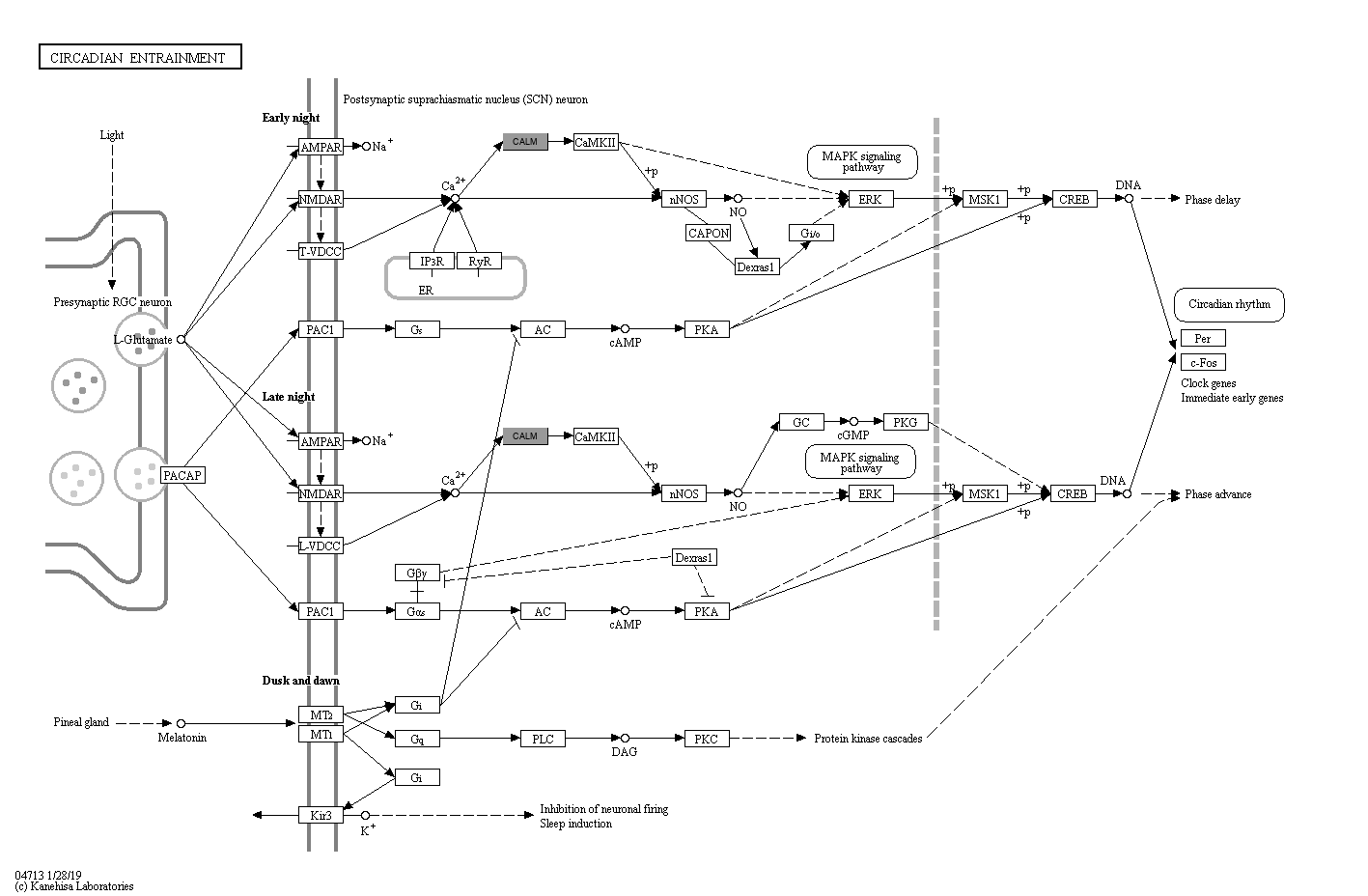|
Circadian entrainment is a fundamental property by which the period of the internal biological clock is entrained by recurring exogenous signals, such that the organism's endocrine and behavioral rhythms are synchronized to environmental cues. In mammals, a master clock is located in the suprachiasmatic nuclei (SCN) of the hypothalamus and may synchronize circadian oscillators in peripheral tissues. Light signal is the dominant synchronizer for master SCN clock. Downstream from the retina, glutamate and PACAP are released and trigger the activation of signal transduction cascades, including CamKII and nNOS activity, cAMP- and cGMP-dependent protein kinases, and mitogen-activated protein kinase (MAPK). Of non-photic entrainment, important phase shifting capabilities have been found for melatonin, which inhibits light-induced phase shifts through inhibition of adenylate cyclase (AC). Multiple entrainment pathways converge into CREB regulation. In turn, phosphorylated CREB activates clock gene expression.
|
 Circadian entrainment - Reference pathway
Circadian entrainment - Reference pathway

 Circadian entrainment - Reference pathway
Circadian entrainment - Reference pathway

